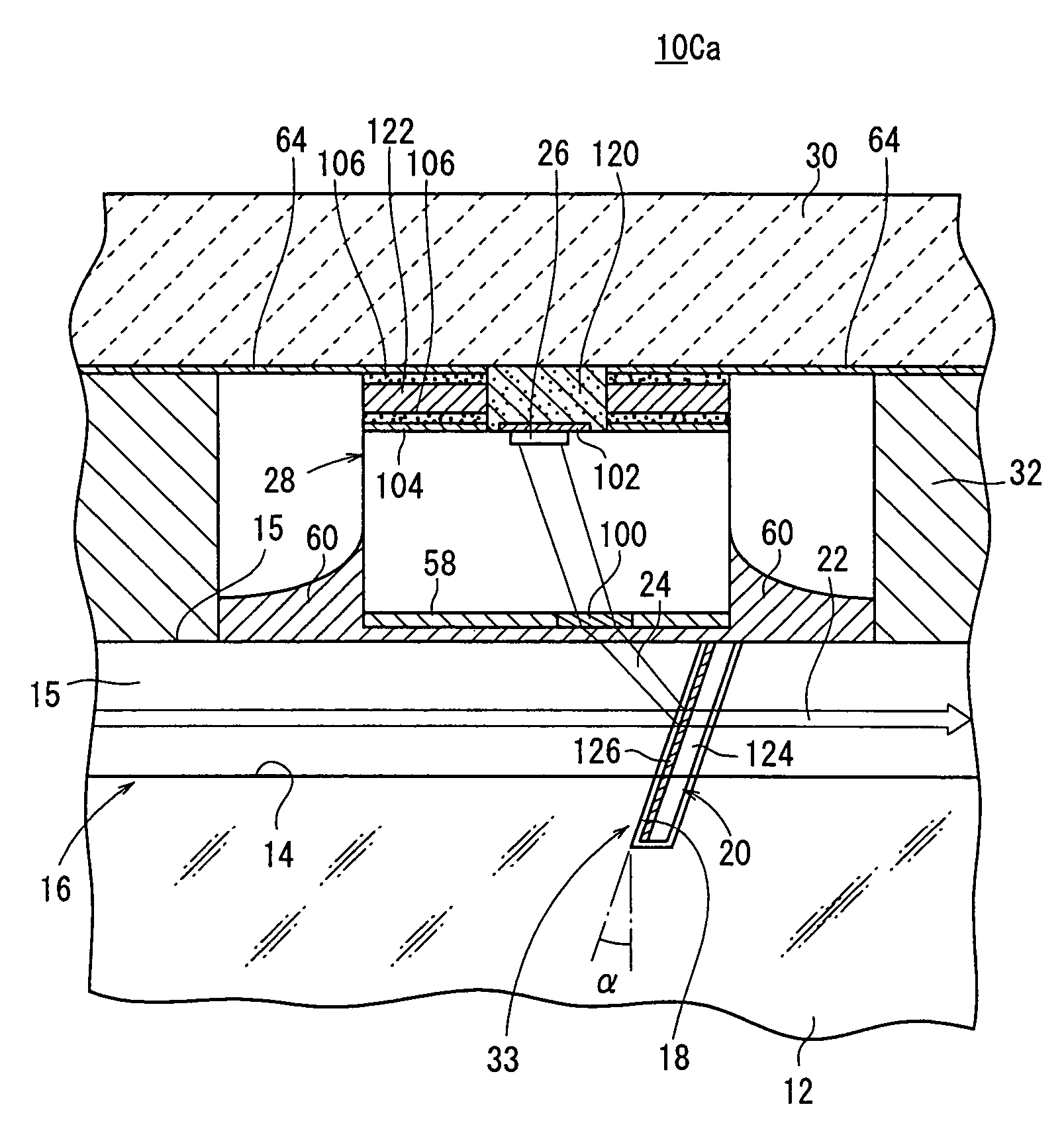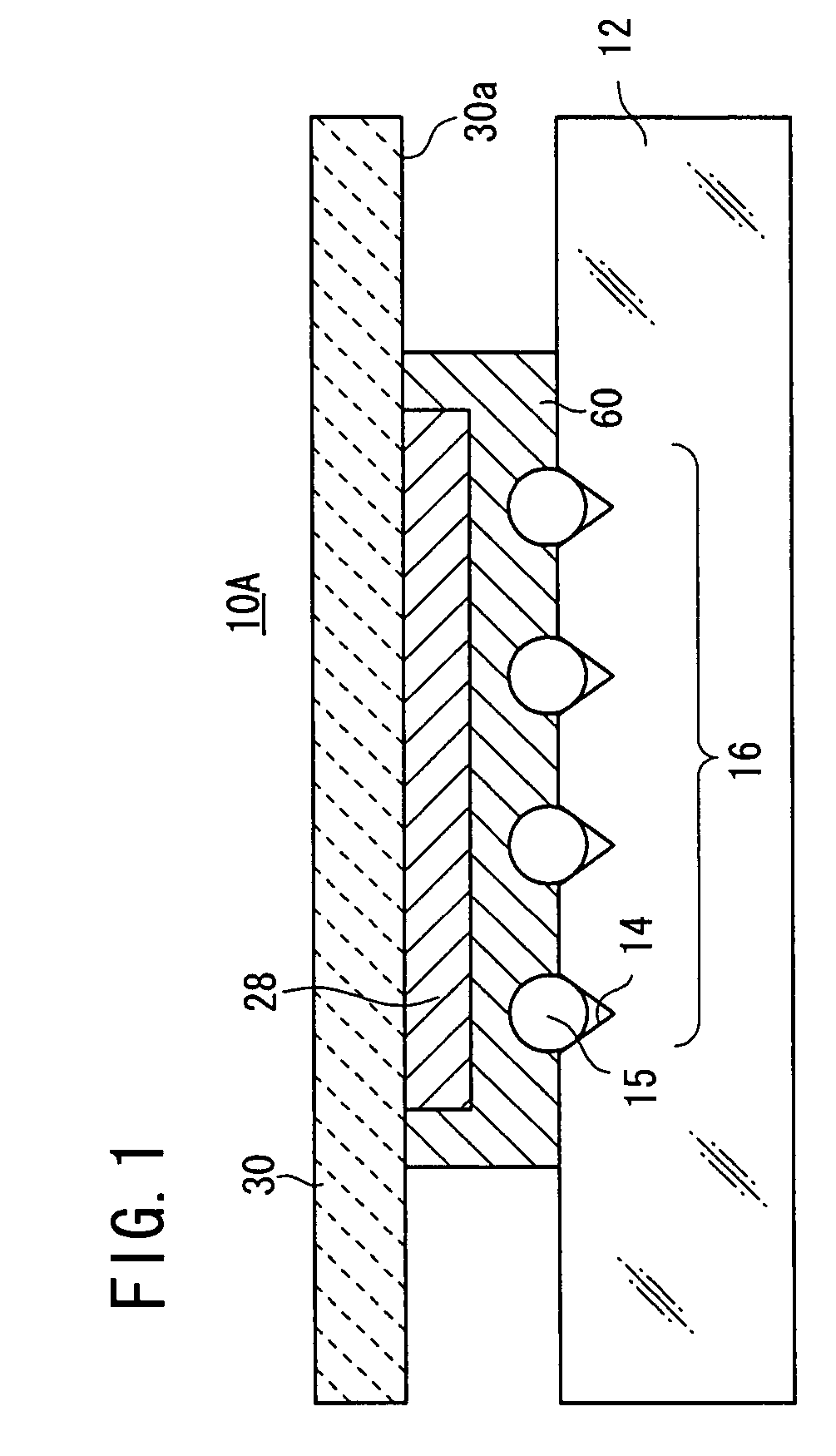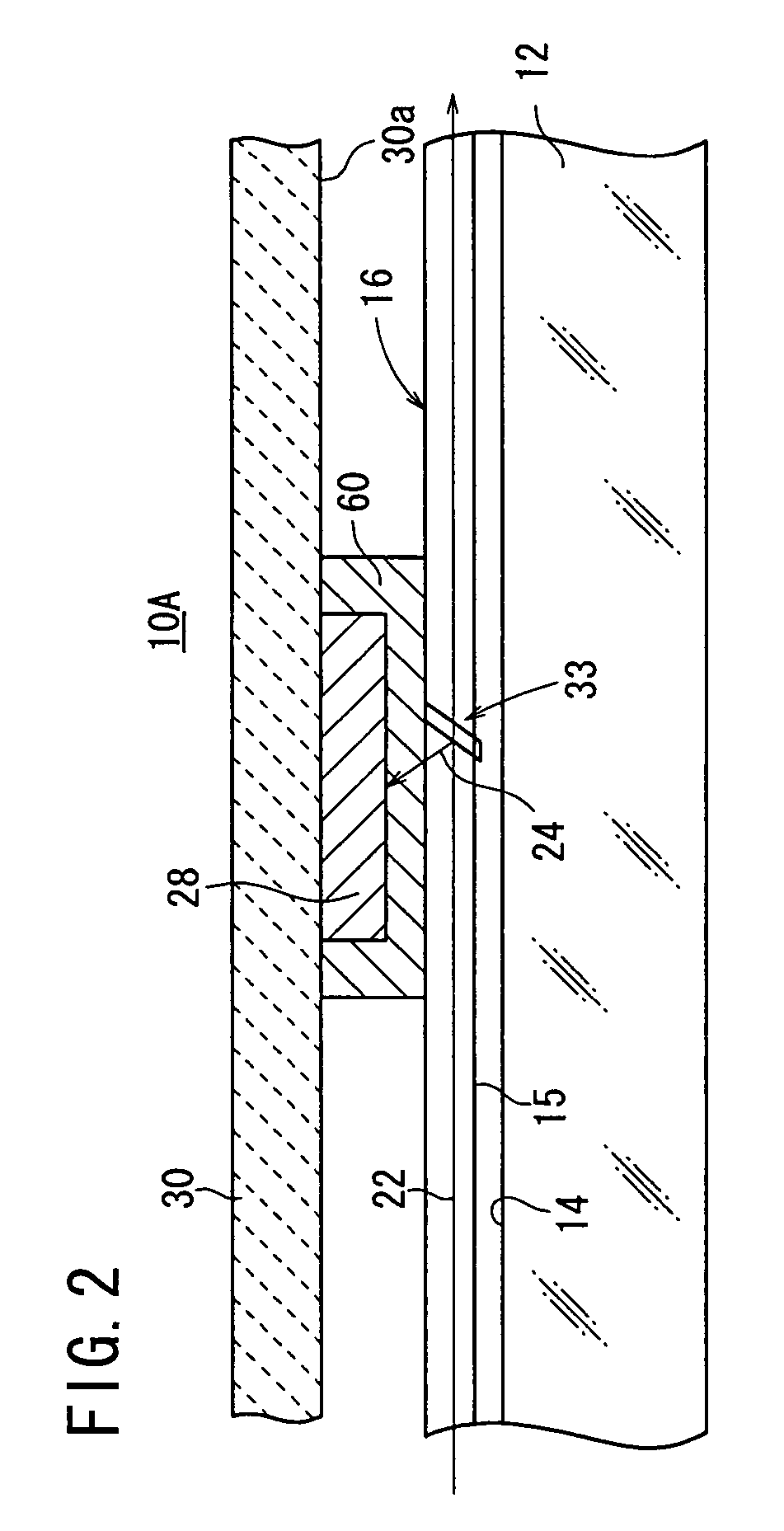Optical device
a technology of optical fibers and optical fibers, applied in the field of optical devices, can solve the problems of difficult use of pds in metal packages in combination with multiple-core optical fibers, and large size, and achieve the effect of reducing crosstalk
- Summary
- Abstract
- Description
- Claims
- Application Information
AI Technical Summary
Benefits of technology
Problems solved by technology
Method used
Image
Examples
first embodiment
[0043]As shown in FIG. 1, an optical device 10A according to the present invention has a glass substrate 12, an optical fiber array 16 comprising a plurality of optical fibers 15 fixed in a plurality of V-shaped grooves 14 defined in the glass substrate 12, a PD (PhotoDiode) array 28 fixed by an adhesive layer 60 to an optical path of light (reflected light) 24 which is generated by at least a reflector, of signal light 22 passing through the optical fibers 15, for thereby detecting the reflected light 24, and a wiring board (submount) 30 on which the PD array 28 is mounted. The submount 30 has a mounting surface 30a for the PD array 28, disposed in confronting relation to the glass substrate 12.
[0044]In this embodiment, the optical fiber array 16 comprises a plurality of optical fibers 15, and “each of the optical fibers 15” means “each of the four optical fibers 15”. However, since even one optical fiber 15 can make up the optical fiber array 16, “each of the optical fibers” or “a...
second embodiment
[0058]An optical device 10B will be described below with reference to FIG. 4.
[0059]The optical device 10B according to the second embodiment is of substantially the same structure as the optical device 10A according to the first embodiment, but differs therefrom in that, as shown in FIG. 4, the first and second gaps 112, 114 are filled with an anisotropic conductive material 120 such as an ACP (anisotropic conductive paste), an ACF (anisotropic conductive film), or the like.
[0060]The anisotropic conductive material 120 contains therein interspersed spherical polymer particles coated with a conductive material such as gold or the like. The spherical polymer particles scatter the reflected light 24 to achieve desired scattering thereof. If the spherical polymer particles are so highly packed that they are held in contact with each other, then they tend to reflect the light largely. Therefore, even though the spherical polymer particles are partly held in contact with each other, they...
third embodiment
[0062]An optical device 10C will be described below with reference to FIG. 5. Those parts of the optical device 10C which correspond to those of the optical device 10B shown in FIG. 4 are denoted by identical reference characters and will not be described below.
[0063]The optical device 10C according to the third embodiment differs from the optical device 10B shown in FIG. 4 in that, as shown in FIG. 5, the PD array 28 is of a structure for detecting light applied to its reverse side.
[0064]The PD array 28 has a substrate 29 and as many active layers 26 as the number of channels on the substrate 29. The active layers 26 are disposed on a portion of the substrate 29 which is close to the submount 30 and the mounting surface 30a of the submount 30.
[0065]In the optical device 10C, a gold electrode pattern 104 on the PD array 28 and a gold electrode pattern 64 on the submount 30 are electrically connected to each other by a conductive layer 106 such as an ACP (anisotropic conductive past...
PUM
 Login to View More
Login to View More Abstract
Description
Claims
Application Information
 Login to View More
Login to View More - R&D
- Intellectual Property
- Life Sciences
- Materials
- Tech Scout
- Unparalleled Data Quality
- Higher Quality Content
- 60% Fewer Hallucinations
Browse by: Latest US Patents, China's latest patents, Technical Efficacy Thesaurus, Application Domain, Technology Topic, Popular Technical Reports.
© 2025 PatSnap. All rights reserved.Legal|Privacy policy|Modern Slavery Act Transparency Statement|Sitemap|About US| Contact US: help@patsnap.com



